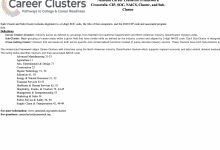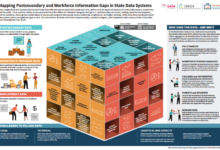The Workforce Data Quality Campaign’s (WDQC) 13-point workforce data blueprint identifies key features of an aligned, inclusive and market-relevant state data system. Such a data system can provide useful information to policymakers, students, workers, business leaders and educators, ultimately aligning education with employer needs and enabling U.S. industries to compete in a changing economy. The blueprint was developed by a broad coalition of national organizations, state leaders and technical experts across the education and workforce spectrum.
For the third year in a row, WDQC surveyed all fifty states and the District of Columbia to measure state progress against the blueprint. This report contains details about each state’s level of progress and examples of how states are implementing blueprint elements. It is intended to promote multi-state cooperation, whereby states share promising practices; challenges; and lessons learned while building, expanding and utilizing their data systems.
Findings from this year’s report indicate that states have made the greatest advancements toward improving labor market data collection, analysis and distribution; determining if graduates from an array of education and workforce programs are finding jobs; and establishing cross-agency councils.







